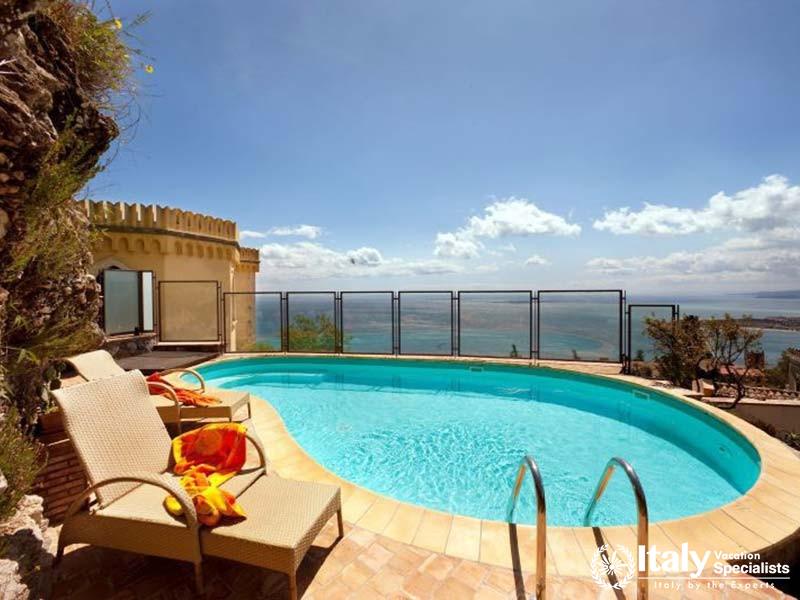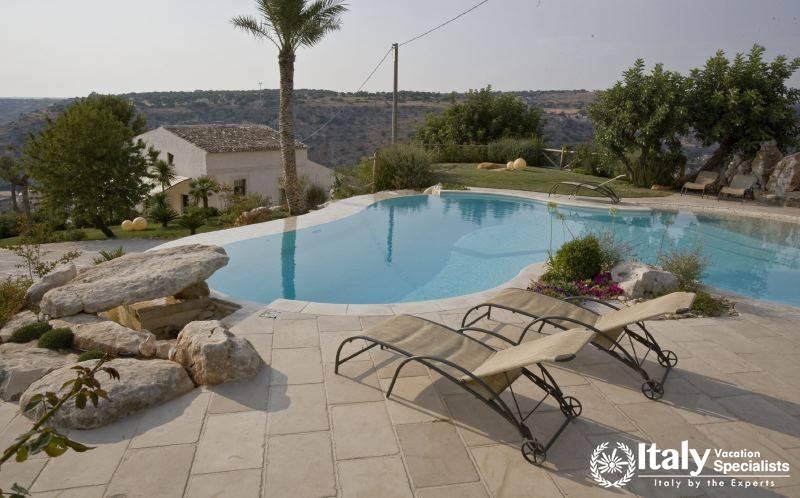Overview
Ragusa is one of our top ten picks in the region of Sicily and we consider it one of the very most romantic towns in all of Italy.
It is most definitely, even with a GPS a little bit difficult to get to, but those who do go will never regret going for it for it shines like a million stars in the night and during the day, it is a glorious city to feast your eyes to and a true wonder for all the senses. For couples particularly although it doesn't even matter if you are there for Romance, self-discover or what the purpose of your trip may be! Ragusa will impress you and the people and food will too.
Here's a Little Bit of History About Ragusa:
The town was almost totally destroyed by earthquake in 1693, but over time it has been rebuilt, much of it in the Baroque style. The city sits on a limestone hill over 500 meters above sea level, between two broad valleys, known as the Cava San Leonardo and the Cava San Domenica.
The city itself is cleaved by a deep ravine, the Valle dei Ponti, dividing the city into a newer upper part, Ragusa Superiore, and the lower portion - but much more beautiful called Ragusa Ibla, and as strange as it sound, the older - lower portion of Ragusa actually seems much higher up.
This is because the ravine is stitched with four bridges, including the Baroque Ponte dei Cappuccinni, built in the 18th Century. The houses of the city appear to tumble down the slopes presenting a beautiful floating apparition to behold by night.
Ragusa's settlement dates from as long ago as the 14th Century BC - when it was settled by the early Sicilian tribes. Subsequently, Ragusa's history parallels that of other parts of Sicily, which there is no need to repeat here. The city's name seems to have its roots in "rogos", the Greek word for "barn" testifying to the still predominant base of the local economy, namely farming.
The city (like nearby Modica) boasts a spectacular array of buildings done in the Baroque style, including the Cathedral of San Giorgio in the lower town, the Chiesa Giovanni Battista in Ragusa Superiore, and Santa Maria delle Scale. San Giorgio, the building of which started in 1738, features massive ornate columns, a flight of 250 stairs and a neoclassical dome that dominates the Piazza Duomo at the front of the church.
The church of Giovanni Battista, built between 1718 and 1778 by the architect Rosario Gagliardo, is as pure an example of the Baroque as you can find on both the exterior and interior. Adjacent to the church is an ornate campanile or bell tower. The interior columns drip with gold.
Santa Maria delle Scale, on the winding and narrow old road connecting the upper and lower parts of Ragusa, was badly damaged in the 1693 quake. Half retains its original Gothic style and the other half has been redone in the Baroque.
Travelers should keep an eye out for the Palazzo Zacco with its slender Corinthian columns and balconies that feature amazingly intricate wrought iron work and a number of playful and sometimes outrageous caryatids. The Palazzo Donnafugata is also of interest. It contains many paintings by Ribera (1588-1652) and Messina (18th century). The "Giardino lbleo" (lbla Gardens) offer incredible views of the surrounding landscape, dry mountains and valleys that are thought by many to be the most scenic in Sicily.
Inside the garden you can step into the cool confines of the Chiesa di San Domenico noted for its majolica decorated campanile. Outside the garden gates look for Chiesa di San Giorgio Vecchio, which, though rebuilt after the 1693 earthquake retains elements of its original Catalan Gothic architecture. Another church near the gardens is the Chiesa di Cappucini Vecchi featuring paintings by Pietro Novelli from the 16th Century.
Tired of church going? Take a tour of the Archaelogical Museum (open 9AM to 1PM and from 3PM to 6PM most days). Its collection includes artifacts dating from the bronze age.
Ragusa is known for its wonderful Ragusano DOP cheese (a cremay, doughy, flavourful version of Caciocavallo (from Calabria), made by hand at every step of its prodcution. Hand in hand with some great local wines, you can't go wrong.
As you pass through the surrounding countryside the agricultural underpinnings of the area are obvious: grapes, olives, walnuts, fruit, hothouse plants and grains grow everywhere; cattle, sheep, pigs and horses fatten on a multitude of pastures divided by low squat walls reminiscent of rural England. This remote province hums along to its own tune, clinging to local customs, cuisines and traditions in aloof disregard even for the rest of Sicily.
Tourism is increasingly important, but there are small industries including wine, cheese and other processed foods, handicrafts, wrought iron, wood and chemical works.
- Jessica Andrews, June 2016
Gallery
Location
Private and Small Group Tours
Multi-Day Holidays Tours
Hotel
Villas
Apartment
Gallery


Our Multi-Day Holidays Tours
For Customized Holidays and Expert Advice, for travel in Italy and the Mediterranean,
get in touch with your travel agent or contact us via our
Trip Planning Questionnaire.
-
Direct In Italy: +39 375 823 5314
-
Toll Free: 1-866-779-2565


























